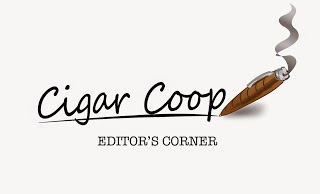Last year Cigar Coop made a decision to extend our window for eligible cigars for our Cigar of the Year Countdown from one year to two years. While we do know that Cigar Journal has employed a similar concept, for the most part, we were the first online media brand to utilize the two-year window. This year, several other websites followed Cigar Coop’s lead of using a two-year window, which I think is a good thing.
There were three reasons behind this change:
- In 2016, the Deeming Regulations by the U.S. Food and Drug Administration (FDA) could very well limit the amount of new releases, so the two-year window opens things up a bit.
- It allows for more time to review cigars that might not have been smoked/reviewed in a timeframe during a calendar year and could have been excluded from a Cigar of the Year list.
- It is this author’s feeling that a single cigar year is too limited to consider aging and tobacco vintage. This allows for cigars released late in the calendar year to be given a chance to better compete. In past years, the late year releases were often fast-tracked through the review process in order to get them to qualify. The two-year window is designated to mitigate this problem.
While on the surface, all appeared to be ideal with this move, I think it introduced another problem. I’m dubbing this problem “The Tabernacle Syndrome.”
The problem emerged when the cut-off deadline is reached for when a cigar is eligible to be included on an end of the year list. As mentioned above, it is possible a cigar might not have been smoked or reviewed and thus misses an opportunity to make the list. With the two-year window, if the cigar was released in the current year, the solution seems simple as it can easily go into next year and have eligibility. The problem becomes when you have several cigars fall under that scenario – which cigars go into the current end of the year list and which ones get pushed into the following year.
I’ve called this Tabernacle Syndrome because of the release of Foundation Cigar Company’s Foundation Cigar Company’s Tabernacle Havana Seed CT No. 142, which was a late December release. I saw several media outlets get this cigar review in before the close of the year. There is nothing wrong with this in theory as if it is a good cigar; it is worthy of competing for a spot on the year-end list. But the bigger question I have is whether this cigar pushed up in the queue of a media outlet’s review schedule simply because of the company and the person behind the company? No doubt Foundation has a stellar reputation, and Nick Melillo is not only popular, but he has raised his game regarding cigar making. At the same time, the question becomes should his cigar be given priority?
This is a very difficult decision many media outlets face. In particular, if they are not using a one-year window, there’s a risk of the cigar not being named on any list at all. The question of the two-year window makes it a little easier.
Cigar Coop has looked at this carefully, and in the end, this author feels it is unfair for a late-year release to bump the pecking order of reviews. On top of that, as stated above, with a two-year window, it’s highly unlikely that a late-year release has been in the market long enough to make a legitimate run at the #1 spot. Most likely as the cigar has more time in the market space, things will settle out.
Ultimately, the solution isn’t black and white, but Cigar Coop is leaning more toward ordering our review cycle in terms of when we procured the necessary cigars for a review. It’s more of a “first in, first out” model. It will be interesting to see how this works out.




